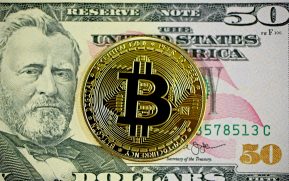
What began as a financial revolution will likely end as just another familiar cog in the same old wheel.
I suspect that Americans who used to camp overnight in long queues to buy a new model of the iPhone were not very rich, nor did they hold lucrative jobs; they appeared to be the kind of people who were melancholic, disenchanted with the mainstream and tired of modern life. Yet they bought an expensive phone because they were part of a cult. A cult is sometimes a group of people who have misunderstood something. When a person has a misconception, he sees what he wishes to see.
I cannot prove it, but I am convinced that the people who waited in queues for a whole night to buy an expensive phone were also among the first to buy Bitcoin. Today, as cryptos collapse, I wish to present a brief history of how cryptos became mainstream, and what it reminds us of human nature.
I won’t begin at the beginning, but at what is convenient. In 2008, the Western financial system collapsed, giving greed a bad name. In the aftermath of the crisis, someone who called himself Satoshi Nakamoto put out a paper that showed how a financial transaction does not require the inconvenience of trusting an intermediary, like a bank or a government. Nakamoto proposed a currency called Bitcoin, which would be created from nothing by a network of computers as they perform computations to create it. Its value is not underpinned by anything valuable except that people want it and it is finite. It was peer-to-peer money that was a rebuke to central banks and governments.
You might also like
Mid-caps, small-caps a good bet, but watch your steps
Govt readies ambitious plan to lift sagging exports
Wary microfinance lenders go for secured loans
How MarketsMojo’s Mohit Batra stands apart in PMS field
This is not the origin of cryptocurrency. Crypto emerges from government paranoia. Years before the birth of Bitcoin, the National Security Agency of the US pondered the idea of cryptocurrency in academic papers. Even though these papers anticipated that such a currency would be a threat to the government, they appeared to talk about it with a degree of respect and fondness. In fact, some people have speculated that Nakamoto, whose identity is not known yet, was from the US government.
At first, Bitcoin was known to only a few software engineers, especially egalitarian coders who spoke like artists, suffered from things that ailed artists, and were always complaining about money, corporations and government. But slowly, Bitcoin attracted Beautiful Losers, if I may borrow a term from the title of musician Leonard Cohen’s unsung novel. These were the underdogs of America who lived in the hope of favourable anarchy. Many of them were not techies or people who could fully grasp what Nakamoto’s white paper tried to say. What they saw was revolution against evil banks, paper trails and the end of paying protection money to the government.
People think that an idea is transmitted in its most powerful way by domain experts. This is not true. Domain experts do talk well about ideas that they fully understand, but it is people who don’t know too much—dilettantes, enthusiasts, fans—who infect the world with their enthusiasm for ideas that are new to them. They were the first evangelists of Bitcoin.
When Nakamoto set out to explain his idea, the circumstances were conducive for it to become religion. The financial crisis of 2008 left many people poor, nervous, pessimistic and angry at the establishment, and it accentuated the anxiety of those Beautiful Losers whose mental health was already poor. Then some of them heard of this mysterious man who created money from air. The anonymity of the founder, and his vanishing, contributed immensely to the cult of Bitcoin. It gave Bitcoin a degree of delinquency, anarchy and selflessness. It was all so Bohemian, the exact opposite of global banking. People who were susceptible to believing began to believe.
The first real-world transaction using Bitcoin is believed to have happened on 22 May 2010, when one Laszlo Hanyecz bought two pizzas for 10,000 Bitcoin. That would be, even in today’s fallen token price, about ₹1,300 crore.
As the cult of Bitcoin grew very powerful, the price of Bitcoin soared. The early buyers grew very rich and could not stop talking about it because they were new to success. They also spoke of the many ways in which Bitcoin would change the world. They were not charlatans. Cons are usually very poor transmitters of ideas. It is the delusional who can infect. And they infected millions. Many cryptocurrencies came to be. One spoof token was created, with the face of a dog, to lampoon the craze for cryptos. This spoof crypto, too, became valuable.
Cryptos promised anonymity of financial transactions and diminished the power of legal tender. In that way, cryptos promised a form of hyper-democracy that reduced the nuisance of government in the lives of people. It is a surprise that governments across the world allowed cryptos to grow so big.
It is in the very evangelical DNA of American tech that it transmits an idea as a moral necessity that will unify the world into some version of the West. This happened with the internet, mobile phones and social media. But governments have no reason to cede power so easily and everything that is supposed to free us ends up regulated.
A government-approved crypto is not a crypto, it is just a fancy form of fiat money. We are today in a phase where governments are slowly transforming cryptocurrency into something more familiar and old.
Very soon, the entire crypto system will begin to resemble the financial system it was designed to overthrow. That is because the way of the world has a good reason to exist. The world we have is a consequence not of what people say, but of what people actually do.
Manu Joseph is a journalist, novelist, and the creator of the Netflix series, ‘Decoupled’.
Elsewhere in Mint
In Opinion, Manu Joseph writes how the global cult of crypto found so many believers. Sarah Green Carmichael tells why middle managers at companies deserve gratitude. Sandipan Deb writes why college graduates regret what they chose to study. Long Story reveals how Adani is giving jitters to south Indian cement companies.
Download the Mint app and read premium stories
Log in to our website to save your bookmarks. It’ll just take a moment.
You are just one step away from creating your watchlist!
Oops! Looks like you have exceeded the limit to bookmark the image. Remove some to bookmark this image.
Your session has expired, please login again.
You are now subscribed to our newsletters. In case you can’t find any email from our side, please check the spam folder.
This is a subscriber only feature Subscribe Now to get daily updates on WhatsApp
 How To Make Huge Profits In A Short Time With Crypto
How To Make Huge Profits In A Short Time With CryptoGet detailed training system that shows an absolute beginner (without any skill) how to make huge profits in a short time with crypto.
 Crypto + NFT Quick Start Course
Crypto + NFT Quick Start CourseThe #1 course for profit in the Crypto & NFT world - You will discover the secrets that 99% of people don’t know yet





